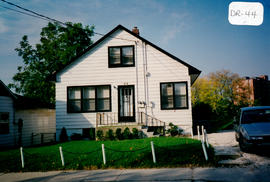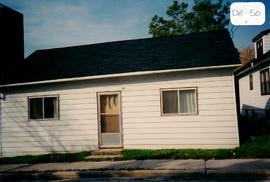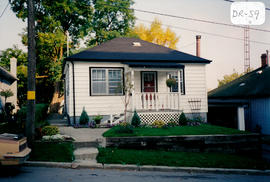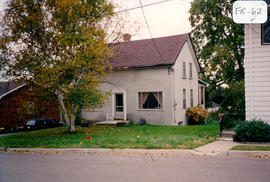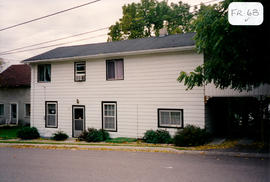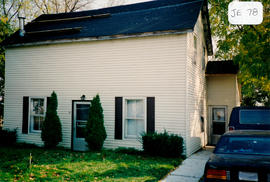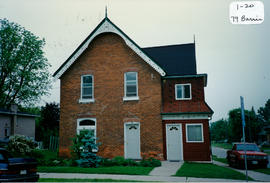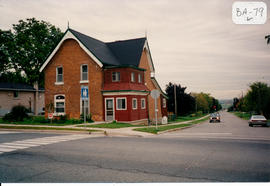- CA BWGPL GJ-HB-2017-03-20-07
- Item
- 1995
Part of George Jackson fonds
The one-storey house once located on the west side at 44 Drury St. had stucco cladding originally. Many years ago it was the home of Fred McKay, his wife, and son (Bruce). Fred was a retired farmer. He had noted gardens (asparagus, strawberries, raspberries) on a number of lots around town. Fred worked for Thompson Fisher in the old skating rink. He also ran the pool room and sold gramophones over the Campbell’s drugstore on Holland Street. Chris Wren and his family lived here years later. Chris was a store merchant (from Mabel) and a painter and paper hanger. The house was demolished (in the 1990’s?) to make an exit and sewer connection from Joe Magani’s grocery store to Drury Street. (1, 2)
George Jackson

